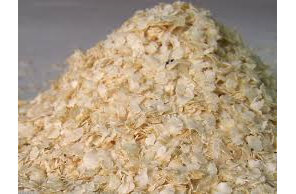ORIGIN: Peru
A great alternative to using Quinoa Flakes in recipes as nutritionally very similar with Amaranth having slightly more protein than quinoa. Has a slight nutty flavour great for gluten free desserts like a apple or pear crumble. Also great for raw baking like seed breads etc..
Botanical name: Amaranthus
Cultivated by the Aztecs 8,000 years ago and still a native crop in Peru, the ancient history of amaranth can be traced to Mexico and the Yucatan Peninsula. Today, it's grown in Africa, India, China, Russia, throughout South America, and emerging once again in North America.
Somewhat of an unknown quantity to many, amaranth is tall - often six feet – with broad green leaves, bright red or gold flowers, and around 60 different species. The flowers are made up of miniscule, grain-like buds, one reason why this plant often falls into the "grain" category. But amaranth isn't technically a grain like oats, wheat, or rice. It's sometimes referred to as a "pseudo-cereal" because its nutritional profile is very similar.
One of the most important aspects of this tiny grain is that it's gluten-free. When ground, the flour is generally a pale ivory shade, although the red "buds" can be ground as well for a red-tinged and very healthful grain.
Being extremely dense, amaranth is too heavy to be used by itself. It's best used with other grains for a lighter texture, and with a proven combination of ingredients like guar gum to impersonate gluten.
Cooking amaranth is comparable to cooking pasta or rice: boil plenty of water (six cups of water per one cup of amaranth), measure the grain into it, cook and stir for 15 to 20 minutes, drain, rinse, and eat.
Amaranth can be used as an exceptional thickener for sauces, soups, stews, and even jellies. Eaten as a snack, amaranth can have a light, nutty, or peppery-crunchy texture and flavor. Best of all, amaranth is even more nutritious than its true-grain counterparts.
Amaranth Fun Facts
In Mexico, a bon-bon of sorts is made from popped amaranth mixed with sugar or honey, and called "dulce de alegria" or “sweet delight." They're formed into little skull-like confections and distributed during the Mexican "Día de Muertos" or "Day of the Dead" celebration.
Summary
Named after the Greek word “amarantos,” which means “one that does not wither," colorful amaranth flower buds stay vibrant even after drying. Cultivated by the Aztecs thousands of years ago, amaranth is still popular in many cultures, and becoming more so in recent years. It can be popped like corn, cooked similar to rice or pasta, or ground to flour.







